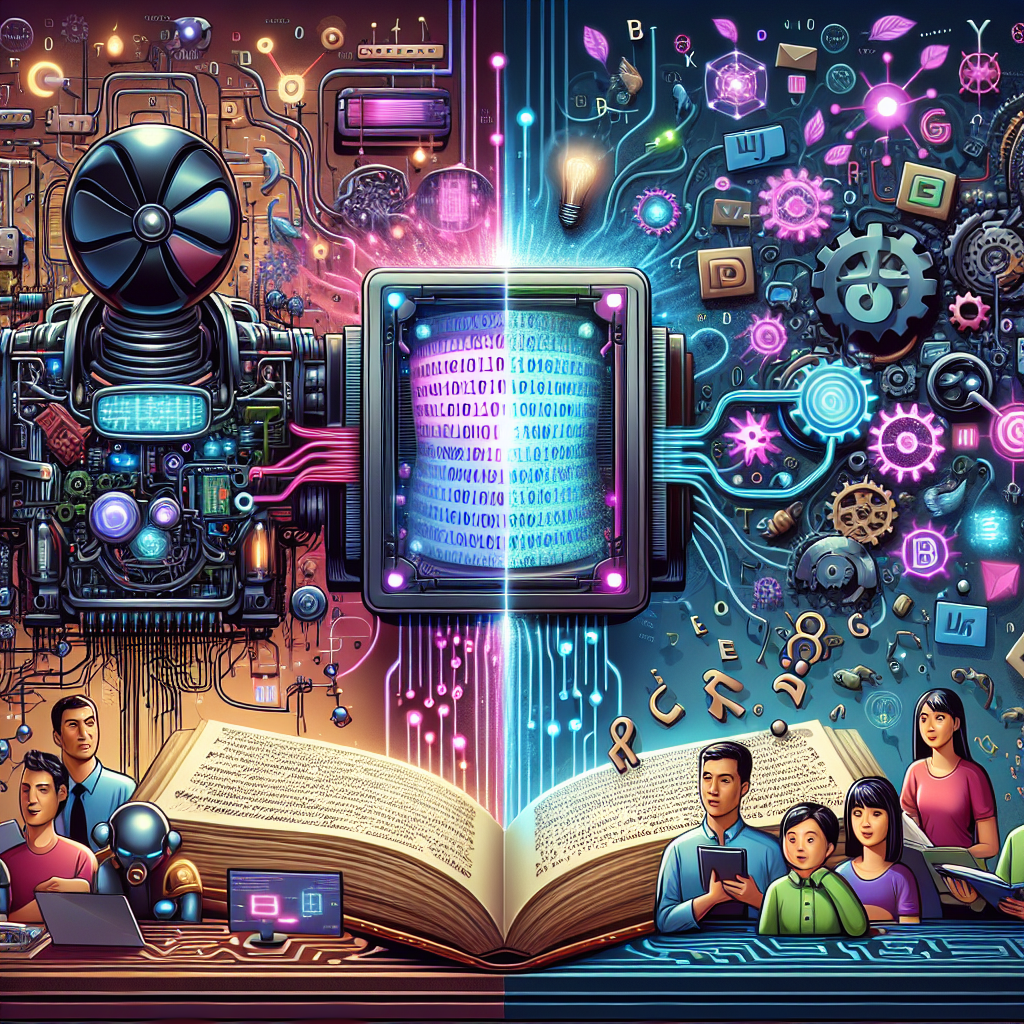Natural Language Processing (NLP) is a branch of artificial intelligence (AI) that focuses on the interaction between computers and human language. It aims to enable computers to understand, interpret, and generate human language in a way that is both meaningful and useful. One of the key technologies that have revolutionized NLP in recent years is machine learning, particularly deep learning algorithms.
Machine learning is a subset of AI that enables computers to learn from data without being explicitly programmed. It involves the use of algorithms that can learn from and make predictions or decisions based on data. In the context of NLP, machine learning algorithms can be used to analyze and process large amounts of text data, enabling computers to understand and generate human language more effectively.
One of the key roles of AI and machine learning in NLP is in the development of language models. Language models are statistical models that are used to predict the next word in a sequence of words. They can be used for a variety of NLP tasks, such as language generation, machine translation, and sentiment analysis. One of the most widely used language models in NLP is the Transformer model, which has been shown to achieve state-of-the-art performance in a wide range of NLP tasks.
Another important role of AI and machine learning in NLP is in the development of sentiment analysis tools. Sentiment analysis is a technique that allows computers to determine the sentiment or emotion expressed in a piece of text. This can be useful for a variety of applications, such as analyzing customer reviews, monitoring social media sentiment, and detecting hate speech. Machine learning algorithms can be trained on large datasets of labeled text data to accurately classify the sentiment of a given piece of text.
AI and machine learning are also being used in NLP for text summarization. Text summarization is the process of creating a concise summary of a longer piece of text. This can be useful for a variety of applications, such as summarizing news articles, academic papers, or legal documents. Machine learning algorithms can be used to automatically generate summaries of text by identifying the most important information and condensing it into a shorter form.
One of the key challenges in NLP is the problem of natural language understanding. Natural language understanding refers to the ability of computers to understand the meaning of human language, including the context, semantics, and intent behind a given piece of text. AI and machine learning are being used to develop models that can accurately understand and interpret natural language, enabling computers to interact with humans more effectively.
In recent years, there has been a surge of interest in the field of conversational AI, which aims to enable computers to engage in natural, human-like conversations with users. Conversational AI systems often use NLP techniques, such as language modeling and sentiment analysis, to understand and respond to user input in a natural and conversational manner. These systems can be used for a variety of applications, such as chatbots, virtual assistants, and customer service agents.
While AI and machine learning have greatly advanced the field of NLP, there are still many challenges that need to be addressed. One of the key challenges is the problem of bias in NLP models. Bias can arise from the data used to train the models, leading to unfair or discriminatory outcomes. Researchers are working to develop techniques to mitigate bias in NLP models and ensure that they are fair and unbiased.
Another challenge in NLP is the problem of robustness and generalization. NLP models often struggle to generalize to new, unseen data or to handle variations in language, such as slang, dialects, or typos. Researchers are working to develop techniques to improve the robustness and generalization of NLP models, enabling them to perform well in a wide range of contexts.
In conclusion, AI and machine learning play a crucial role in advancing the field of natural language processing. These technologies enable computers to understand, interpret, and generate human language in a way that is both meaningful and useful. From language modeling to sentiment analysis to conversational AI, AI and machine learning are revolutionizing the way we interact with computers through language. As researchers continue to make advances in NLP, we can expect to see even more powerful and sophisticated applications of AI and machine learning in the field.
FAQs:
Q: What is the difference between AI and machine learning in NLP?
A: AI is a broad field that encompasses the development of intelligent systems that can perform tasks that typically require human intelligence, such as understanding and generating human language. Machine learning is a subset of AI that focuses on the development of algorithms that can learn from data without being explicitly programmed. In NLP, machine learning algorithms are used to analyze and process text data, enabling computers to understand and generate human language.
Q: How are AI and machine learning used in sentiment analysis?
A: AI and machine learning algorithms are used in sentiment analysis to analyze and classify the sentiment or emotion expressed in a piece of text. These algorithms are trained on large datasets of labeled text data to accurately classify the sentiment of a given piece of text, enabling computers to automatically determine whether a piece of text is positive, negative, or neutral.
Q: What are some of the key challenges in NLP that AI and machine learning are helping to address?
A: Some of the key challenges in NLP that AI and machine learning are helping to address include bias in NLP models, natural language understanding, text summarization, and conversational AI. Researchers are working to develop techniques to mitigate bias in NLP models, improve natural language understanding, generate concise summaries of text, and enable computers to engage in natural, human-like conversations with users.

